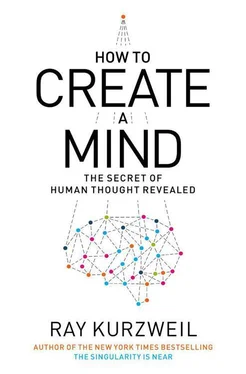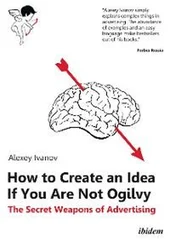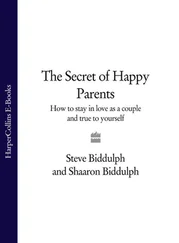Albert Einstein
The brain is a three-pound mass you can hold in your hand that can conceive of a universe a hundred billion light years across.
Marian Diamond
What seems astonishing is tHat a mere three-pound object, made of the same atoms that constitute everything else under the sun, is capable of directing virtually everything that humans have done: flying to the moon and hitting seventy home runs, writing Hamlet and building the Taj Mahal—even unlocking the secrets of the brain itself.
Joel Havemann
I started thinking about thinking around 1960, the same year that I discovered the computer. You would be hard pressed today to find a twelve-year-old who does not use a computer, but back then there were only a handful of them in my hometown of New York City. Of course these early devices did not fit in your hand, and the first one I got access to took up a large room. In the early 1960s I did some programming on an IBM 1620 to do analyses of variance (a statistical test) on data that had been collected by studying a program for early childhood education, a forerunner to Head Start. Hence there was considerable drama involved in the effort, as the fate of this national educational initiative rode on our work. The algorithms and data being analyzed were sufficiently complex that we were not able to anticipate what answers the computer would come up with. The answers were, of course, determined by the data, but they were not predictable. It turns out that the distinction between being determined and being predictable is an important one, to which I will return.
I remember how exciting it was when the front-panel lights dimmed right before the algorithm finished its deliberations, as if the computer were deep in thought. When people came by, eager to get the next set of results, I would point to the gently flashing lights and say, “It’s thinking.” This both was and wasn’t a joke—it really did seem to be contemplating the answers—and staff members started to ascribe a personality to the machine. It was an anthropomorphization, perhaps, but it did get me to begin to consider in earnest the relationship between thinking and computing.
In order to assess the extent to which my own brain is similar to the computer programs I was familiar with, I began to think about what my brain must be doing as it processed information. I have continued this investigation for fifty years. What I will describe below about our current understanding of how the brain works will sound very different from the standard concept of a computer. Fundamentally, however, the brain does store and process information, and because of the universality of computation—a concept to which I will also return—there is more of a parallel between brains and computers than may be apparent.
Each time I do something—or think of something—whether it is brushing my teeth, walking across the kitchen, contemplating a business problem, practicing on a music keyboard, or coming up with a new idea, I reflect on how I was able to accomplish it. I think even more about all of the things that I am not able to do, as the limitations of human thought provide an equally important set of clues. Thinking so much about thinking might very well be slowing me down, but I have been hopeful that such exercises in self-reflection will enable me to refine my mental methods.
To raise our own awareness of how our brains work, let’s consider a series of mind experiments.
Try this: Recite the alphabet .
You probably remember this from childhood and can do it easily.
Okay, now try this: Recite the alphabet backward .
Unless you have studied the alphabet in this order, you are likely to find it impossible to do. On occasion someone who has spent a significant amount of time in an elementary school classroom where the alphabet is displayed will be able to call up his visual memory and then read it backward from that. Even this is difficult, though, because we do not actually remember whole images. Reciting the alphabet backward should be a simple task, as it involves exactly the same information as reciting it forward, yet we are generally unable to do it.
Do you remember your social security number? If you do, can you recite it backward without first writing it down? How about the nursery rhyme “Mary Had a Little Lamb”? Computers can do this trivially. Yet we fail at it unless we specifically learn the backward sequence as a new series. This tells us something important about how human memory is organized.
Of course, we are able to perform this task easily if we write down the sequence and then read it backward. In doing so we are using a technology—written language—to compensate for one of the limitations of our unaided thinking, albeit a very early tool. (It was our second invention, with spoken language as the first.) This is why we invent tools—to compensate for our shortcomings.
This suggests that our memories are sequential and in order. They can be accessed in the order that they are remembered. We are unable to directly reverse the sequence of a memory.
We also have some difficulty starting a memory in the middle of a sequence. If I learn to play a piece of music on the piano, I generally can’t just begin it at an arbitrary point in its middle. There are a few points at which I can jump in, because my sequential memory of the piece is organized in segments. If I try to start in the middle of a segment, though, I need to revert to sight-reading until my sequential memory kicks in.
Next, try this: Recall a walk that you took in the last day or so. What do you remember about it?
This mind experiment works best if you took a walk very recently, such as earlier today or yesterday. (You can also substitute a drive, or basically any activity during which you moved across some terrain.)
It is likely that you don’t remember much about the experience. Who was the fifth person you encountered (not just including people you know)? Did you see an oak tree? A mailbox? What did you see when you turned the first corner? If you passed some stores, what was in the second window? Perhaps you can reconstruct the answers to some of these questions from the few clues that you do remember, but it is likely that you remember relatively few details, even though this is a very recent experience.
If you take walks regularly, think back to the first walk you took last month (or to the first trip to the office last month, if you commute). You probably cannot recall the specific walk or commute at all, and if you do, you doubtless recall even fewer details about it than about your walk today.
I will later discuss the issue of consciousness and make the point that we tend to equate consciousness with our memory of events. The primary reason we believe that we are not conscious when under anesthesia is that we don’t remember anything from that period (albeit there are intriguing—and disturbing—exceptions to this). So with regard to the walk I took this morning, was I not conscious during most of it? It’s a reasonable question, given that I remember almost nothing about what I saw or even what I was thinking about.
There happen to be a few things I do remember from my walk this morning. I recall thinking about this book, but I couldn’t tell you exactly what those thoughts were. I also recall passing a woman pushing a baby carriage. I remember that the woman was attractive, and that the baby was cute as well. I recall two thoughts I had in connection with this experience: This baby is adorable, like my new grandson , and What is this baby perceiving in her visual surroundings? I cannot recall what either of them was wearing or the color of their hair. (My wife will tell you that that is typical.) Although I am unable to describe anything specific about their appearance, I do have some ineffable sense of what the mom looked like and believe I could pick out her picture from among those of several different women. So while there must be something about her appearance that I have retained in my memory, if I think about the woman, baby carriage, and baby, I am unable to visualize them. There is no photograph or video of this event in my mind. It is hard to describe exactly what is in my mind about this experience.
Читать дальше












